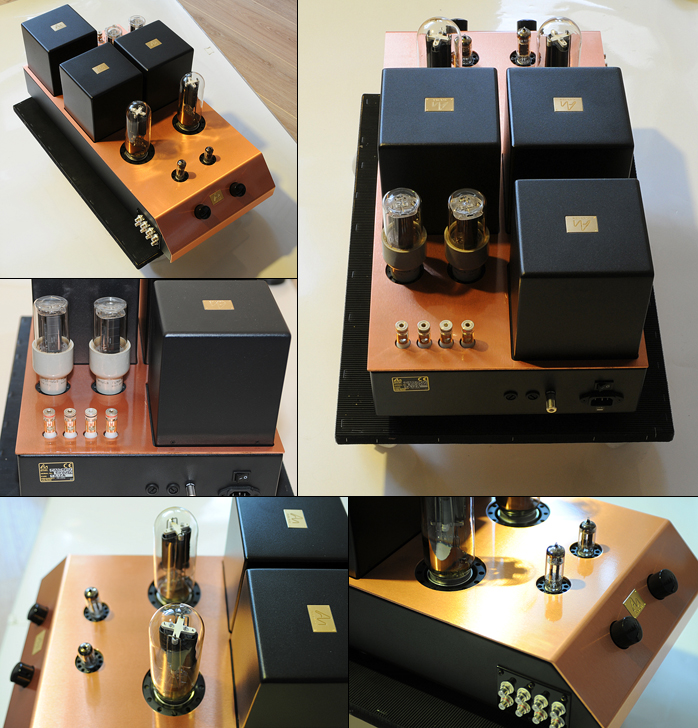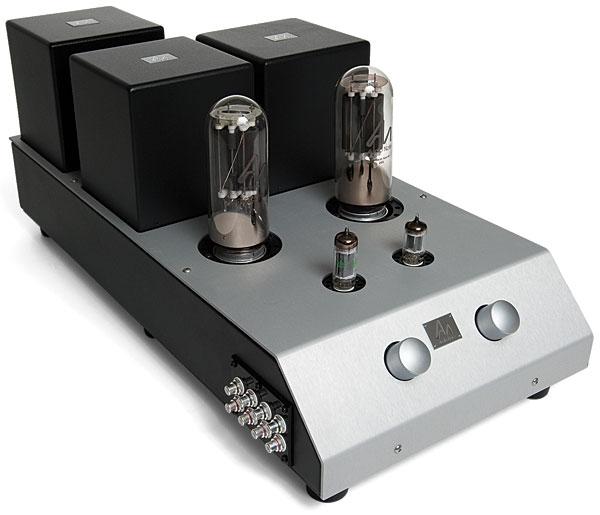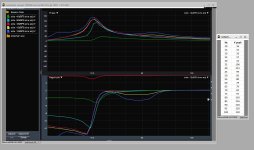- You believe that I will perceive the signal as being colored?....the areas of beaming are going to what? Sound like its not there? Is that even possible? The whole idea is based on, that the lack of room energy, is going to change perception lol. 1" tweeters beam...no ones crying.To think that this energy does not affect the perception is simply nieve.
Interesting.D&B are becoming very popular, and for good reason. I used Meyer Sound for years and the joke used to be "Meyer. You can buy a better speaker, but you can't pay more for it." I think D&Bs motto might be "And you thought Meyer was expensive." 😀
That said, the D&B do sound good and are super easy to use. The first time we set it up in a large space (19000 sq meters) the client was not happy that we had tuned the PA without him, since he had requested to do it himslef. The look on his face when we told him we hadn't touched the EQ, the system was flat, was priceless.
Still, I know front of house engineers who prefer L'Acoustic because they find D&B a little edgy, harsh. Great for Rock and Roll. Even so, most of the big new systems are much smoother than they used to be, it's quite noticeable. It starts to come down to personal preference.
According to an article the d&b system in that specific hall was approx. €700.000, which seems a conservative estimation.
The (approximated) realised costs of the cultural building in which this hall is located are close to €175 million.
I am not very familiar with d&b gear of the past, but I would describe the sound signature of d&b (without exception) as very smooth and even slightly warm.
Differences between Pro Audio brands are becoming smaller and smaller, as you indicate. I like the l'Acoustics line arrays as well.
It's perhaps not surprising to learn that similar sized speakers of different brands often contain drivers from the same supplier. With the exception of RCF (which evidently uses their own drivers), B&C leads the the OEM market for loudspeaker drivers.
This raises the question: what happened to JBL?
I haven't spotted any JBL systems for many years, except for a pair of old EONs hanging from the ceiling of a tiny bar in eastern Spain.
Last edited:
It's kind of cool to see different fields of expertise converge in this thread.
For dynamic EQ, I have primarily used Ozone and started fiddling with DMG EQuilibrium recently.
Many of these Mastering-grade EQ vsts require lots of studying and experimenting.
As with loudspeaker processing, all the phase related aspects apply, FIR versus IIR, linear vs. non-linear etc.
TDR Nova GE and Sonnox Oxford Dynamic EQ plug-in for UAD hardware and Apollo interfaces are interesting too, but I detest dongles and hardware restricted software.
Really enjoy the different expertise/perspectives in this thread too...
Also love the club/venue/gear reports you've been adding in...
So, I've been skimming some of the multi-band compressor and dynamic-EQ products you guys mentioned, and I still don't know exactly what to call what I've put together.
I guess it seems closer to a dynamic-EQ, than a multi-band compressor if for no other reason than it's only operating on one band.
The difference between my limiter and dynamic-EQ appears to be that dynamic-EQ effects response around a signal operating at a relatively steady overall level where peaks stay just below 0dBFS,
whereas my limiter/hpf effects response on overall levels that vary greatly, as shown below.
Attached transfer plot shows some various levels, along with a chart of maximum peak voltage output from the sub amp.
Second pict is the limiter's component schematic. If it makes sense to anyone as to what it would be called conventionally, pls lemme know. 🙂
Attachments
I once built an analog excursion limiter/dynamic EQ using a Sallen-Key highpass with a high Q.
By electronically controlling the resistor that is going from the non-inverting OP input to ground it was possible to have a filter that is tuneable from low cutoff /high Q to high cutoff/low Q. I used an OTA for the controllable resistor. J-FETs would also be possible and of course LDRs (almost forbidden nowadays unfortunately).
The steering signal came from a level detector behind a notched 2nd order lowpass that approximated the transfer function of the cone excursion.
A circuit like that was used by KLH in the late seventies - early eighties but its highpass filter was a little more complicated than mine.
Regards
Charles
Another
By electronically controlling the resistor that is going from the non-inverting OP input to ground it was possible to have a filter that is tuneable from low cutoff /high Q to high cutoff/low Q. I used an OTA for the controllable resistor. J-FETs would also be possible and of course LDRs (almost forbidden nowadays unfortunately).
The steering signal came from a level detector behind a notched 2nd order lowpass that approximated the transfer function of the cone excursion.
A circuit like that was used by KLH in the late seventies - early eighties but its highpass filter was a little more complicated than mine.
Regards
Charles
Another
Still common here in the US not surprisingly. But I see more new rigs being l'Acoustic, d&b or Meyer. The live sound world is just as trendy as most of the tech world. There is always a flavor du jour.This raises the question: what happened to JBL?
that should read "gout du jour" if you want to use a french colloquialism please do so correctly 😛 !
as to JBL's sagging presence in the pro market that will happen to any company who's engineering department is forced to take directives from it's marketing department 😀
as to JBL's sagging presence in the pro market that will happen to any company who's engineering department is forced to take directives from it's marketing department 😀
hey... what do you know that one got by the bad word filter!
no wonder i sometimes long for the past....
no wonder i sometimes long for the past....
My brother and I were just discussing "the state of JBL" and he told me about a pair of DD67000s that were flown in from the UK for a demo.
His colleague (a Synthesis dealer ao) couldn't get them to sound decent with an Ongaku, so he used an Ayre amp instead.
I suggested he could have bi-amped the 67000s with the Ongaku only connected to the horns...
Apparently he didn't know how to do that 😉 and unfortunately I wasn't around.

His colleague (a Synthesis dealer ao) couldn't get them to sound decent with an Ongaku, so he used an Ayre amp instead.
I suggested he could have bi-amped the 67000s with the Ongaku only connected to the horns...
Apparently he didn't know how to do that 😉 and unfortunately I wasn't around.

Last edited:
Thats interesting to me. I will have to look up the Ongaku.
I haven’t run them on many amps but find it’s almost hard to make them not sound good. I do need a better room to get the most out of them though.
Barry.
I haven’t run them on many amps but find it’s almost hard to make them not sound good. I do need a better room to get the most out of them though.
Barry.
There exist actually 2 of these.
This is the Kondo Ongaku (built by Audio-Note Japan):

And this Ongaku by Audio-Note UK is the one I referred to:

This is the Kondo Ongaku (built by Audio-Note Japan):

And this Ongaku by Audio-Note UK is the one I referred to:

Last edited:
At 1/4 of the price, the AN Jinro delivers about 95% of the Ongaku's magic and with copper wiring instead of silver it's probably better tailored to most Horn speakers.

So much for tube amps.

So much for tube amps.
as to JBL's sagging presence in the pro market that will happen to any company who's engineering department is forced to take directives from it's marketing department 😀
Not to mention, JBL made it's reputation on manufacturing precision and quality. I just got a really clear idea of how bad their mexico production is compared to northridge-
View attachment 801576
View attachment 801577
View attachment 801578
View attachment 801579
There's a northridge made horn and a mexico made horn. JBL sent a replacement for the "bad" unit- it was better but still nowhere near the quality of the northridge made horn. 3 horns from mexico and none were to the quality of northridge. The last one was specifically double checked by JBL QC, and still was off, just not enough so to keep fighting with them about.
Those look worthy of cloning! AXI2050 and a pair of 15's. Shouldn't need the supertweeter.
....In an anechoic chamber this is true, but in real rooms it is not. At a typical listening situation there is as much as or more energy in the reverberant field as there is in the direct field (this depends on the listening distance and room characteristics, etc., but seldom would the reverberant energy be negligible) To think that this energy does not affect the perception is simply nieve.
- You believe that I will perceive the signal as being colored?....the areas of beaming are going to what? Sound like its not there? Is that even possible? The whole idea is based on, that the lack of room energy, is going to change perception lol. 1" tweeters beam...no ones crying.
This comment confirms the impression I have been picking up from you earlier in the thread, that you are unaware of the unsurpassed research that demonstrates that constant directivity speakers in home listening conditions are universally preferred, other things being equal. Assuming, of course, controlled listening test conditions. The best current intelligence on the issue is sufficient so that CD should be a mandatory critierion in the spec sheet for anyone who wants the best available result.
IIRC Earl gave a this thread a few nudges in that direction, but his voice was basically swamped in the rush of eye-candy wow-factor audio anachrophilia and legend worship. Since then it seems that he (and I) have sat back in bemusement and enjoyed the visual parade of giants.
It's your thread, it's your choice which way to go. But your comment above is not as smart as you seemed to think it was, mockery and all.
cheers
- Home
- Loudspeakers
- Multi-Way
- Is it possible to cover the whole spectrum, high SPL, low distortion with a 2-way?


